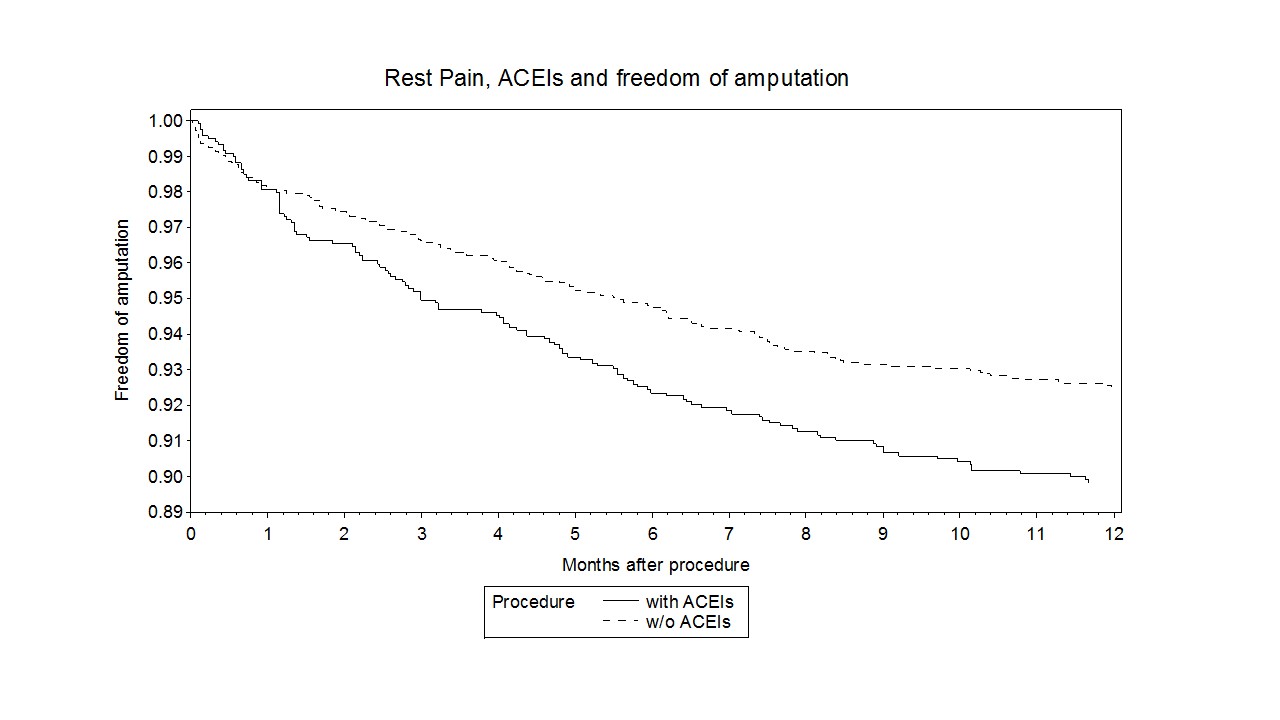Back to 2016 Annual Symposium Abstacts
Angiotensin-Converting Enzyme Inhibitors (ACEI) and Freedom from Amputation after Lower Extremity Revascularization
Jared E. Kray, DO1, Viktor Y. Dombrovskiy, MD. MPH, PhD2, Todd R. Vogel, MD, MPH1.
1University of Missouri Hospital & Clinics, Columbia, MO, USA, 2Rutgers University, New Brunswick, NJ, USA.
Objective: ACE inhibitors (ACEI) have not been well evaluated in conjunction with lower extremity revascularization (LER). This study evaluated freedom from amputation in patients who underwent either an open (OPEN) or endovascular (ENDO) revascularization with and without utilization of an ACEI.
Methods: Patients 65 years of age and older undergoing LER were identified from MedPAR files. Demographics, co-morbidities, and disease severity were obtained. Post procedural use of an ACE was confirmed with National Drug Codes and Part D files. Outcomes were analyzed using Chi-square analysis, Kaplan-Meier, and Cox regression.
Results: We identified 22,954 patients undergoing LER: 8,128 (35.4%) patients with claudication, 3,056 (13.3%) with rest pain, and 11,770 (51.3%) with ulceration or gangrene. More patients underwent ENDO (14,353) than OPEN (8,601) and 38% of the cohort was taking an ACEI. ACEI utilization was not associated with lower amputation rates at 30 days (13.5% vs. 12.6%), 90 days (17.7% vs. 17.1%), or 1 year (23.9% vs 22.8%) (p>0.05 for all). After adjustment for comorbidities ACEI utilization was associated with higher amputation rates for patients with rest pain (HR: 1.4; CI: 1.1- 1.8).
Conclusion: ACEI utilization was not associated with overall improved rates of amputation free survival or overall survival in the vascular surgery population. These data suggest that ACEI utilization may be associated with increased amputation rates in certain vascular patients. Further analysis is needed to define the best medical management in this population after intervention.

Back to 2016 Annual Symposium Abstacts
|







